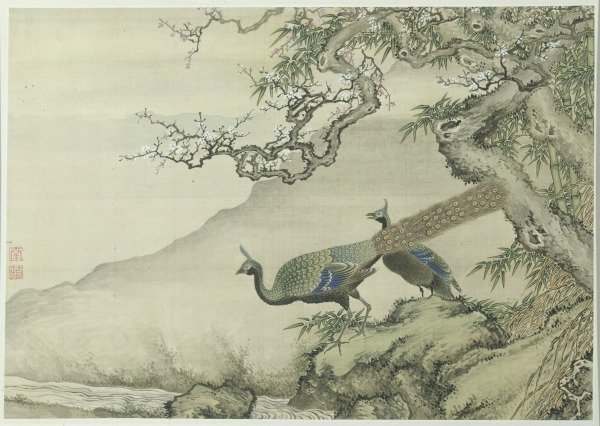The Symbolism of Peacocks

Jul, 07, 2021
ArtArtists
The Symbolism of Peacocks
Across all genres and cultural categories of art, symbolism is a key tool used by artists to convey important information or an overarching message with subtlety and nuance. This 1742 ink on silk illustration by Shen Quan portrays an animal that has been used throughout history to symbolize royalty—the peacock. But how did this feathered creature become a symbol of monarchies?
All peafowl, most known for their “eye” feathers, originate from the Indian subcontinent. Their tails convey beauty and confidence, and thus, over time, these birds came to represent royalty and power in many cultures and backgrounds. In India, this is most evident in the famed Peacock Throne. Built in the early 17th century for Şah Jahan, the throne featured two sculpted peacocks encrusted in gold and jewels. Although the original throne was later stolen and taken to Persia, never to be seen again, future Indian thrones often included similar features and bore the same name.
According to Greek mythology, the peacock was a sacred bird to Hera, queen of the gods, wife to Zeus, and the patroness of women, marriage, and childbirth. Hera became jealous when Zeus would spend time with Io, one of his many mistresses, and recruited Argus to watch her with his hundred eyes. After Argus was killed in a plot, Hera set his eyes on the tail of a bird as a tribute. The new creation, a peacock, became so important to Hera that they were chosen to pull her chariot.
In Chinese mythology, the beautiful colors and “eyes” on the peacock’s tail represented fame and good luck, as they enhanced one’s protection and awareness. While representing different meanings to different cultures, the peacock, with its unique beauty, makes it a handy symbol for power, strength, confidence, and even divinity, something with which most monarchs throughout history have wanted to be associated.
Shen Quan, Peacocks (Pavos reales), 1745. Ink and color on silk. Museum purchase.
Categories
What can we help you find?
Need further assistance?
Please call Visitor Services at 602.257.1880 or email